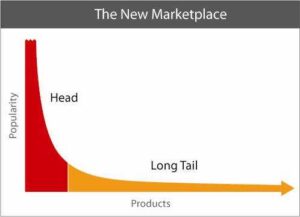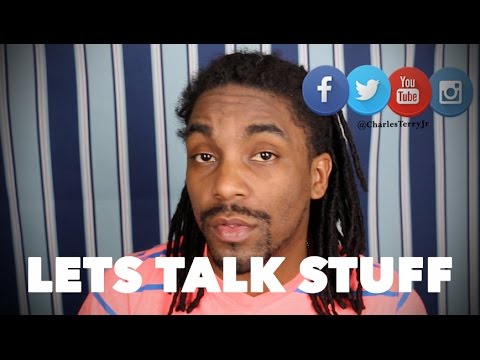The easy part is building the actual product or delivering the service. If you are not convinced, just consider this – Imagine a substance that falls from the sky and springs up from the earth for free. Yet, we are willing to pay more for it than we do for gasoline. Yep, I’m talking about water. Aquafina, Dasani, Fiji, and Evian didn’t invent water and frankly, half of all bottled water is just tap water in a bottle.
The hard part is finding and convincing someone to buy your product or service. The marketing landscape has changed dramatically in recent years. There is a common fable that if you place a frog in a pot of boiling water, it will simply jump out. However, if you place a frog in cool water and slowly raise the temperature, the frog will remain there until it is cooked. Many business owners are not aware that the temperate marketing waters that worked when they started their business are now boiling them alive.
Today we live in what Chris Anderson terms the long tail economy. In the old days, a company (large or small) could achieve success by advertising their product on T.V. to convince someone to buy it. This type of advertising is called interruption marketing. This strategy worked fine in the old days when we had just three channels: ABC, NBC, and CBS. Each network’s goal needed to appeal to all demographics, but they used their programming to narrow the audience for advertisers. In fact, networks would often compete for the same demographic during the same time slots. Most notably was the afternoon time slots targeting stay-at-home housewives with programming such as soap operas. However, from the viewer’s standpoint, there were very few T.V. viewing options.
Then came cable T.V., which created hundreds of new and targeted channels. For instance, cable T.V. provided a venue for all-day news channels like CNN, sports channels like ESPN, and even channels targeting history buffs like the History Channel.
Consequently, the network itself became the first line of targeting a demographic and then the programming fine-tuned it even more. For example, the Outdoor Channel targeted outdoor enthusiasts from RVers to mountain climbers. Yet, the program Fly Rod Chronicles targeted fly fisherman specifically. Companies that catered to fly fishermen, such as Orvis who makes fly fishing equipment or retailers like Cabela’s who sell it, knew that while there were fewer eyeballs watching, their advertisements were reaching a far better audience.
From the viewer’s standpoint, there were not only hundreds of channels to choose from but programming that was far more customized to their specific desires. Control shifted from the network driving programming to consumers selecting networks and programming that appealed to them.
Today, YouTube has created literally millions of channels. Many millennials are even cutting the cable cord in favor of YouTube and subscription-based, on-demand streaming products like Netflix or Hulu to watch content free of interruption marketing.
For companies, there is no longer a limited number of choke points to ambush the customer with their advertisements. Today the customer is segmented into ever more tiny tribes, each with their own channel and programming. It is no longer possible for a small business to rely on adverting to remain relevant since there are so many channels to choose from.
Advertising has a place for very large companies and brands that want to sell millions of undifferentiated products, such as laundry soap or automobiles, to the masses.
Large companies with deep financial resources continue to hire an advertising agency to design new ad campaigns. The effectiveness of the ad itself is impossible to measure directly. If the campaign’s effectiveness is ever questioned, the company’s marketing executive often fires the ad agency, blaming them for the failure, and hires another ad agency. If the situation occurs again, the cycle simply repeats.
Employing this type of advertising strategy is virtually useless for small businesses with limited budgets. Interruption marketing continues to diminish in value more every day as new channels are introduced. A more viable solution for small businesses is not to try and piggyback on other people’s content as large companies do, but to create their your own content and deliver it on your own channel.
When I refer to developing your own channel, I’m talking about your blog, YouTube, or Podcast channel that will appeal to your very small but ideal customer. However, before you can sell to them, you have to attract the audience with great content. Sure, some of the time the viewer just wants to sit back and be entertained, but more and more the viewer is taking control of the experience.
Rather than just watching a show about fly fishing, the viewer who is planning an Alaskan fly fishing adventure might want consumer content specific to techniques that work for dolly varden or king salmon in Alaska. By providing rich and highly targeted content, you can not only promote your own message, but you can sometimes share your audience with a complementary product or service providers for additional revenue or other concessions.

Creating one’s own channel that not only delivers content but shapes the marketing message is the core tenet of the long tail economy that we now live in.
The head of the new marketplace is for mass marketing of undifferentiated products such as beer and televisions. The tail of the new marketplace is the realm of the small business owner to cultivate. Your role is to identify and zero in on your very specific niche and create a channel to address the very specific content needs of your ideal customer.
For the small business owner in today’s world, it is no longer efficient to convince people to buy your product or service using advertising that piggybacks on someone else’s undifferentiated content just because it has a wide audience. The idea that getting access to a bigger market is better is no longer true. It is not about the sheer number of eyeballs reached, but the quality of the eyeballs. If the aperture of your targeted tribe is too big, you risk not being specific enough to create enough gravity to draw in an audience at all.
Today, the savvy small business marketer must create a channel that appeals to a very tiny tribe of users. They must provide a level of content that will dominate their tiny slice of the tail and then use their market clout to subtly convince the consumer to buy their product.
Is it time to create your own channel?












